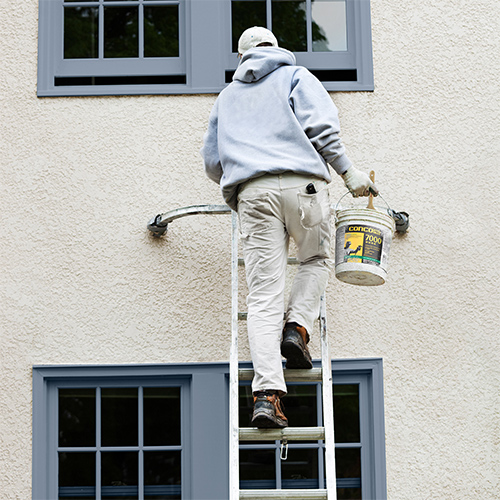When the temperature drops and winter sets in, many homeowners and professional painters face a unique challenge – painting in cold weather. Cold weather can have a significant impact on your painting project, from slowing down drying times to affecting the quality of your finish. However, with the right knowledge and preparation, you can still achieve outstanding results, even when the mercury plummets. In this blog post, we’ll share some valuable tips and tricks for painting in cold weather, brought to you by the experts at Rainer Painting.
Choose the Right Paint
One of the most critical factors when painting in cold weather is selecting the appropriate paint. Opt for latex-based or acrylic paints designed specifically for low-temperature applications. These paints are formulated to perform better in cold conditions and have a lower freezing point, ensuring they won’t become thick or clumpy when the temperature drops.
Check the Weather Forecast
Before you begin your painting project, check the weather forecast. Avoid painting on extremely cold or wet days, as this can lead to poor adhesion and longer drying times. Aim for days with temperatures above 35°F (1.7°C) and low humidity for optimal results.
Prepare Your Surface
Proper surface preparation is crucial for any painting project, but it becomes even more critical in cold weather. Make sure to clean and sand the surface thoroughly. Remove any loose paint, dirt, or debris to ensure proper adhesion of the new paint. Additionally, if you’re painting over a surface that is below freezing, it’s essential to warm it up before applying paint.
Use a Primer
Applying a high-quality primer is essential when painting in cold weather. Primers improve paint adhesion, coverage, and durability. Choose a primer that is compatible with your chosen paint type and follow the manufacturer’s instructions for application.
Maintain Proper Ventilation
While it’s tempting to keep doors and windows closed to retain heat in cold weather, proper ventilation is essential during a painting project. Adequate ventilation helps paint dry faster and reduces the risk of fumes accumulating, which can be harmful to your health.
Keep Paint Warm
Cold temperatures can cause paint to thicken and become less manageable. To counter this, store your paint indoors at room temperature before using it. If possible, use a heated container or water bath to keep your paint warm while working.
Work in Smaller Sections
In cold weather, it’s advisable to work in smaller sections to ensure that you can finish painting before the paint starts to freeze or dry too slowly. This approach will help you achieve a more consistent finish and avoid visible brush or roller marks.
Use the Right Tools
Choose paint brushes and rollers that are suitable for cold-weather painting. These tools are designed to work effectively in lower temperatures. Additionally, consider using an extended roller handle to maintain a comfortable working posture and reduce the risk of fatigue.
Conclusion
Painting in cold weather can present challenges, but with proper preparation and the right techniques, you can still achieve professional-looking results. Remember to select the right paint, prepare your surfaces thoroughly, and work in favorable weather conditions. By following these tips and tricks, you’ll be well on your way to mastering the art of cold-weather painting and ensuring a beautiful, long-lasting finish for your home or project.
At Rainer Painting, we understand the demands of painting in all seasons. Our experienced team is here to provide you with expert guidance and high-quality painting services, no matter the weather. Contact us today to learn more about our services and how we can assist with your painting needs.

